Taking the pulse
Now lift the patients? arm off the bed and assess the pulse. This serves two purposes: apart from the value of the pulse examination itself, it is a gentle and non-threatening way to initiate physical contact with your patient.
| AFRIKAANS | TRANSCRIPT | XHOSA |
|---|---|---|
| May I count your heart beat? / Mag ek u polsslag meet? / Ndicela ukubala intliziyo yakho ibetha njani? | ||
| Give me your arm please. / Gee vir my u arm, asseblief. / Ndicela ingalo yakho. | ||
| Please keep still while I feel your heart beats. / L?asseblief stil terwyl ek u polsslag meet. / Ndicela ungashukumi uzibambe nje kancinci, ngoku ndiva ukubetha kwentliziyo. |
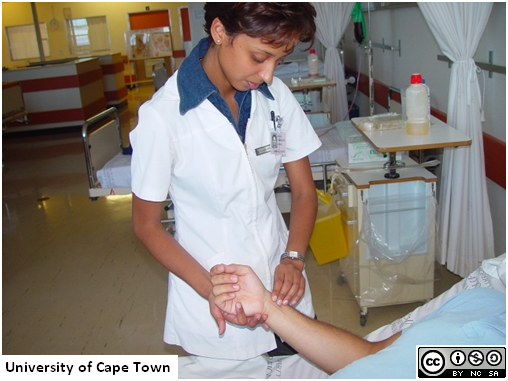
Notice how the radial artery runs nicely in the groove between the tendons entering the hand in the middle of the forearm and the edge of the radius.
Place your fingers neatly in this groove and press lightly to feel the pulse.
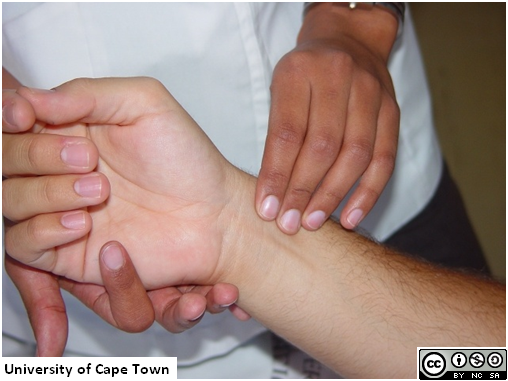
Even though you are right-handed, you may find it most comfortable to use the fingers of your left hand to feel the pulse, while supporting the patient?s forearm with your right. This enables you to see your watch easily.
Note:
- Rate
- Rhythm
- Volume
- Character
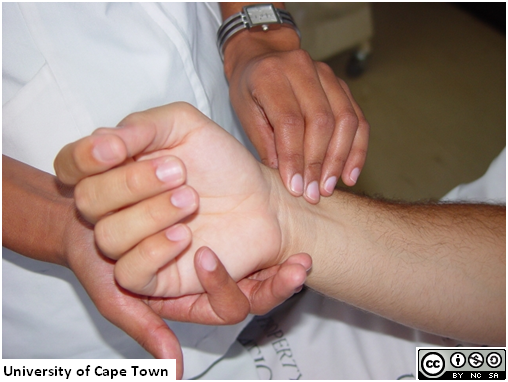
Practise an easy, confident and comfortable technique for taking the pulse. Use one hand to support the patient?s arm, while placing two or three fingers of your other hand lightly over the radial artery.
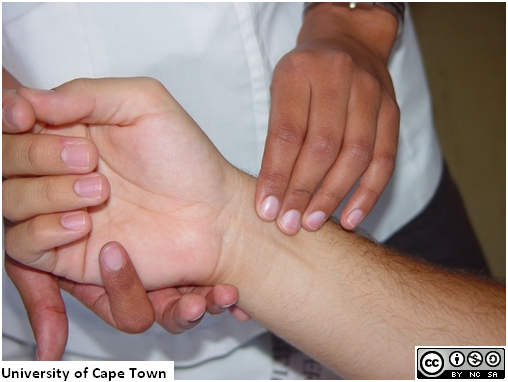
The pulse rate is measured by counting the number of beats you feel while looking at the second hand of your watch.
Calculate this as follows:
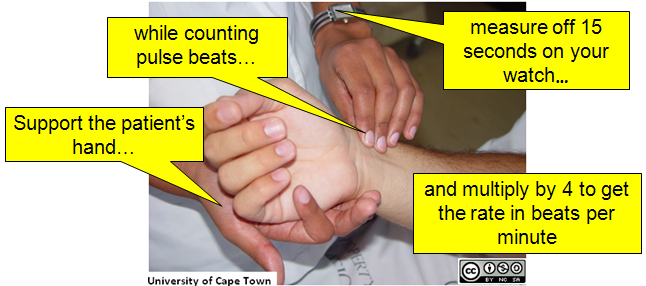
You will learn more detail about the information which may be gained from the pulse when you learn the cardiovascular examination. At this stage, it is sufficient to judge whether the pulse appears abnormally rapid or slow, abnormally strong or weak. These are described as the rate and the volume of the pulse.
Note:
- Rate
- Rhythm
- Volume
- Character
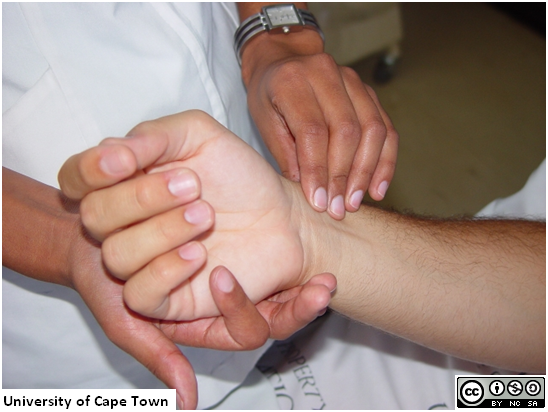
| AFRIKAANS | TRANSCRIPT | XHOSA |
|---|---|---|
| That?s fine thank you. / Goed so, dankie. / Kulungile, enkosi. |
